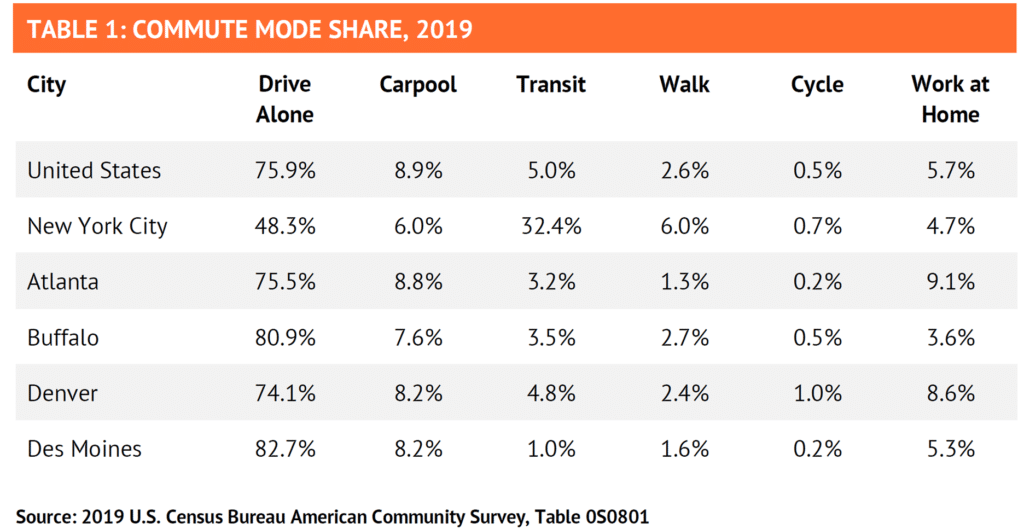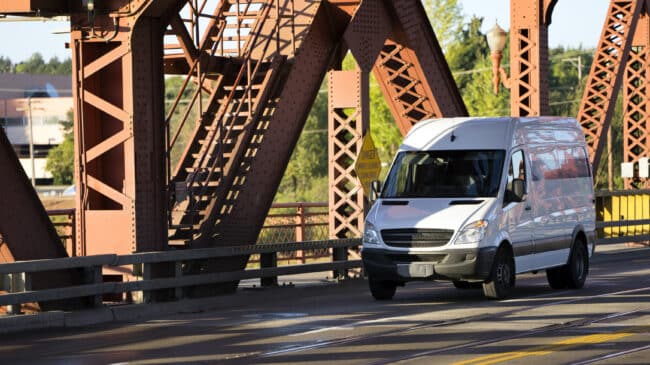The COVID-19 pandemic has decimated fixed-route mass transit ridership. As of January 2021, rail ridership had declined by 80% while bus ridership has declined by 50%. Most experts believe that mass transit ridership will only recover 70%–90% of its pre-COVID total. Some bus routes may no longer be feasible to operate. Vanpools, shared vehicles in which 7–15 people travel together to work, have also lost ridership. But those ridership losses have been smaller; further, vanpool ridership is expected to recover more quickly because riders know each other and are comfortable sharing an enclosed space. Vanpools may also be a replacement in areas where fixed-route bus service no longer makes sense.
Vanpools fulfill many of the same policy goals as traditional fixed-route transit. Over the long term, most metro areas are seeking to reduce the number of single-occupancy vehicles. The Los Angeles and Washington, D.C., metropolitan areas are two regions that have adopted the explicit goal of increasing the percentage of mass transit users. With conventional transit ridership declining, alternative modes such as vanpools will be critical to meeting that goal.
Outside of New York City, transit use is marginal. As Table 1 shows, a variety of different regions had a pre-COVID-19 pandemic mass transit commute mode share of 5% or less. Transit’s nationwide share of 5% is inflated thanks to New York City’s 32.4% share.

For many commuters, conventional mass transit is not a realistic option. In many parts of most metro areas, both residences and employment are dispersed. Transit is most effective when it connects areas of moderate or higher residential density with areas of moderate or higher employment density. Some commuters may live in a high-density community but work in a low-density area or vice versa. As a result, more than 50% of commuters cannot take mass transit in many metro areas.
Even many workers who could take transit choose not to for numerous reasons, such as travel times to stations, time spent waiting for a transit vehicle, longer overall trip times, lack of comfort, perceived safety concerns, and the need to use a vehicle throughout the day (for example tradesmen and real estate agents). And many forecasters predict that COVID-19 has changed the world of work by increasing the percentage of commuters who will work from home going forward. These changes call for a reconsideration of a mode of mass transit forgotten by many planners: vanpools.

